Har Tzaror or Mount Tzaror is the dark mesa you can see from the Zin cliff to the north east. The hike takes you in a wide arc around this feature.
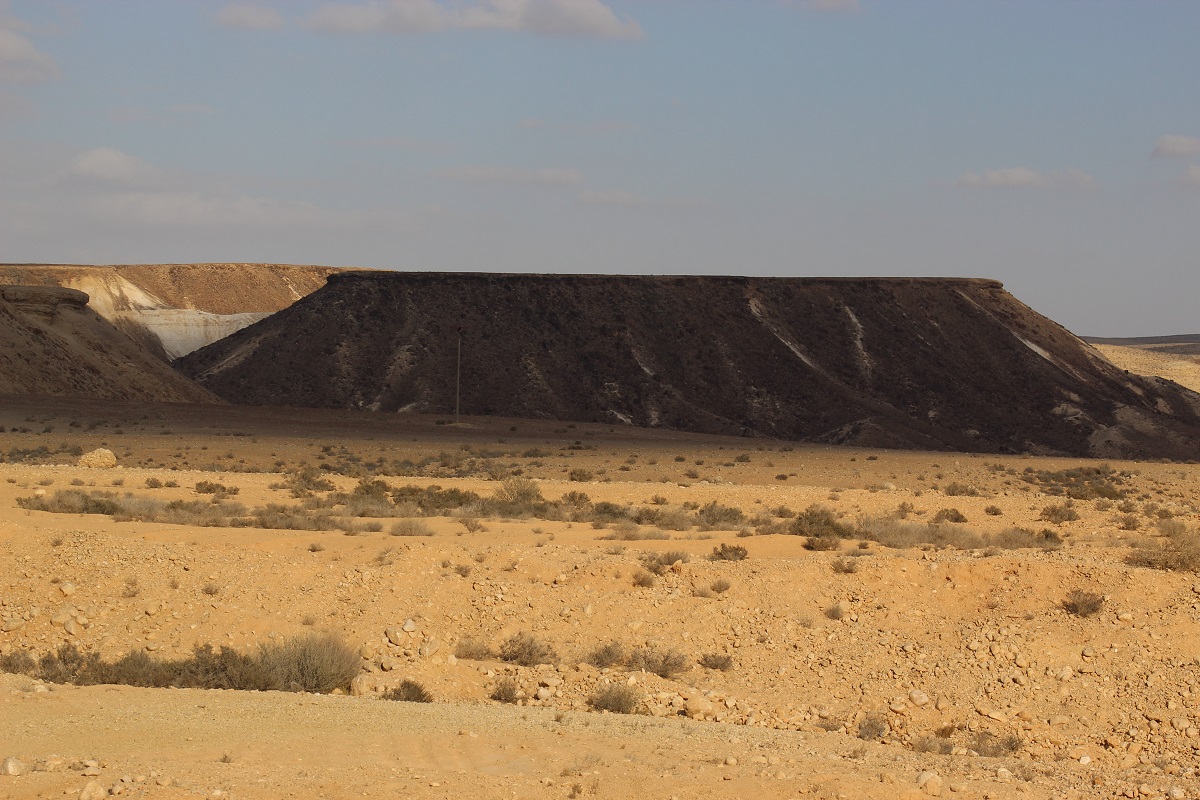
It is a 3 hours loop from our doorstep. It is rated ‘medium difficult’ because some parts are steep and can be slippery even in dry conditions but it is good for families with children. Binoculars are recommended for this outing.
You can shorten this walk by one hour; instead of leaving your room by foot going in a north easterly direction along the cliff like you would to do to walk to the Sculpture Park, you can drive out to road 40, turn right (north) and after several hundred meters turn right again on a dirt road signposted ‘Sde Tzin’. This dirt road is rough but you can do it in a regular car if the ground is dry. Sde Tzin is an old landing strip built for the use of Ben Gurion’s guests [heads of state etc], known locally as ‘the airport’.
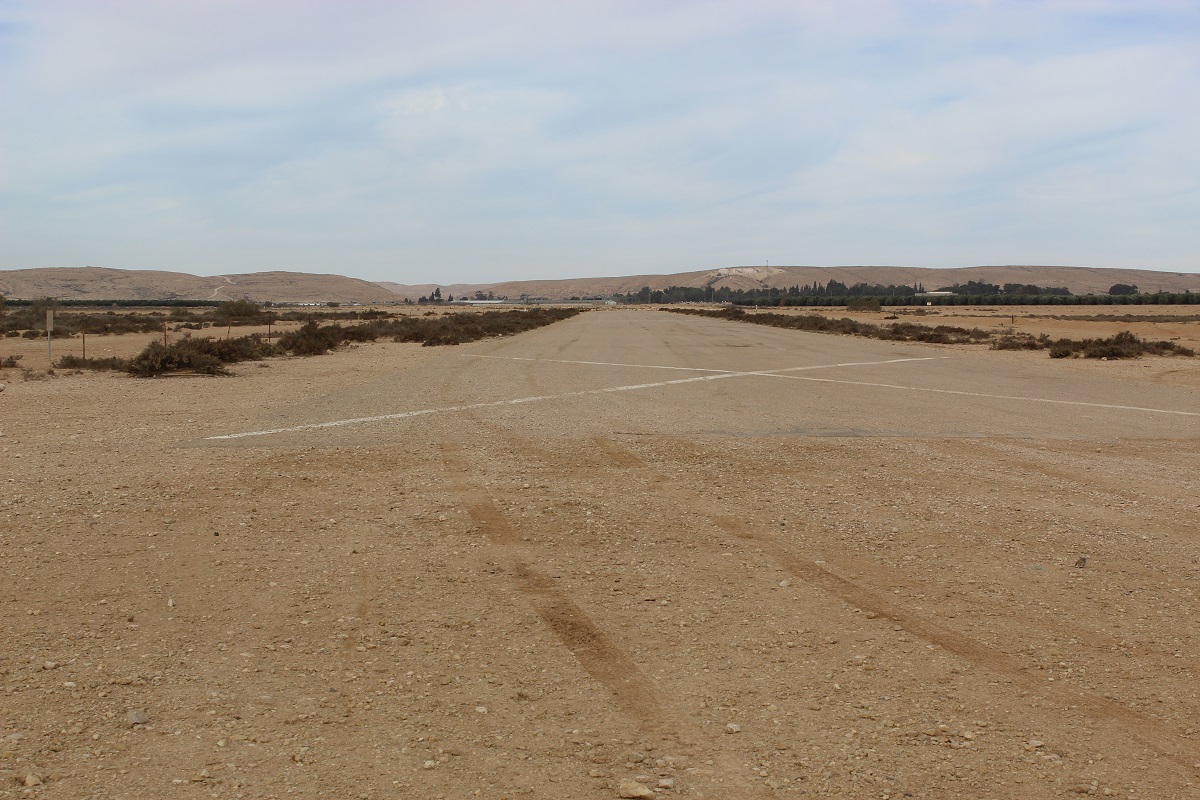
On a warm, sunny day in winter allow for more than three hours as you may want to wet your feet while sitting on the edge of Gev Tzaror admiring the view. Gev means pool, a depression in the limestone which fills with water when it rains. it is exactly the kind of thing billionaires have installed in their mountain retreat so take a cigar. It generally stays full between November and March.
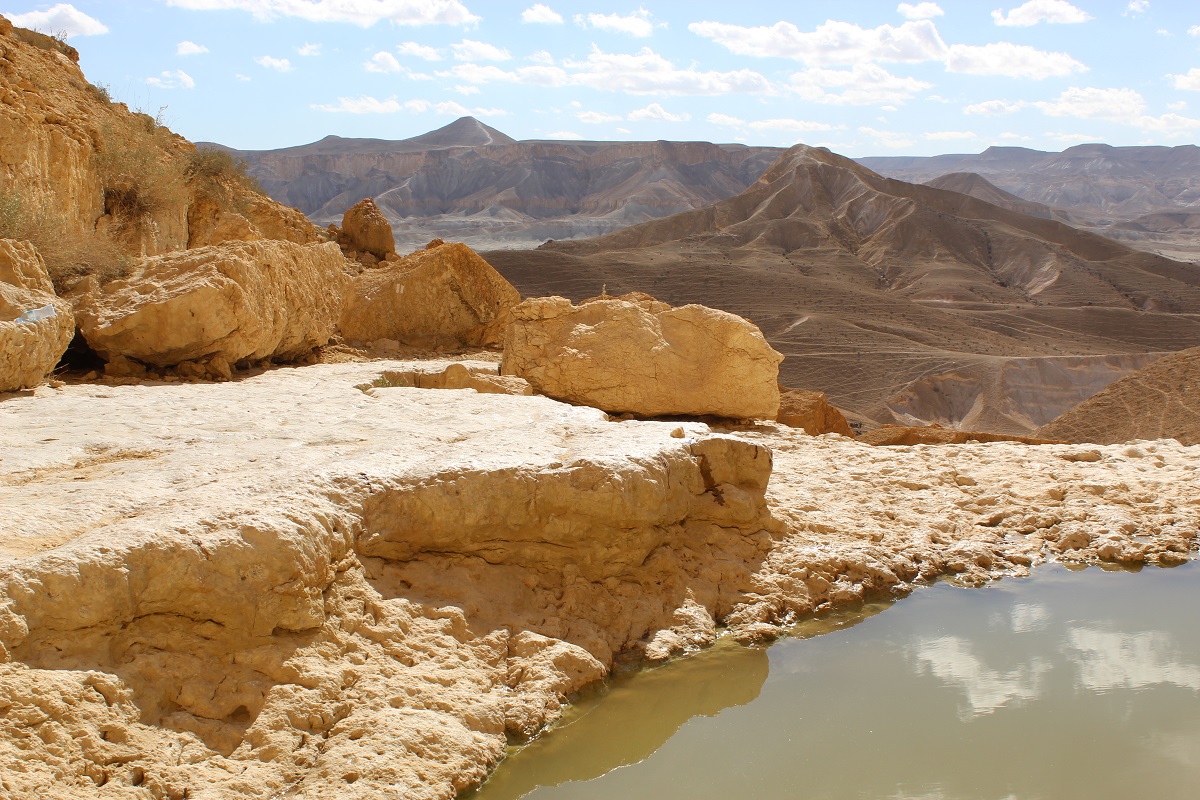
Har Tzaror is not generally on the tourist track and more’s the pity as a good part of this hike is downright spectacular. It also means that there is a good chance you won’t see another living soul for the duration. Even the locals seem to forget about it, except for one time in the year. On the first Saturday of every September the entire village gets up in the middle of the night and walks in a procession to Har Tzaror to witness the ‘sunrise ceremony’ which marks the start of the final year for grade 12 at our environmental high school. About a hundred 17 year old kids dance half naked with body paint and ragged costumes, howling at the sun to celebrate dawn, cheered on by parents, siblings, grandparents and teachers; all that is missing is the golden calf.
I would say that the hike is divided in three parts. A slightly boring part, an extremely pleasant desert-hike part and a breathtaking part. As always when a hike is a loop, you can start from either end. I find that starting with the most dramatic part changes the whole experience and even makes the last bit more enjoyable. The determining factor could be the light; as you will want to take pictures, make sure you are on the stunning part either in the early morning or late afternoon as at mid-day, the glaring light bleaches everything out even in the winter.
This stone is the starting point from ‘the airport’:
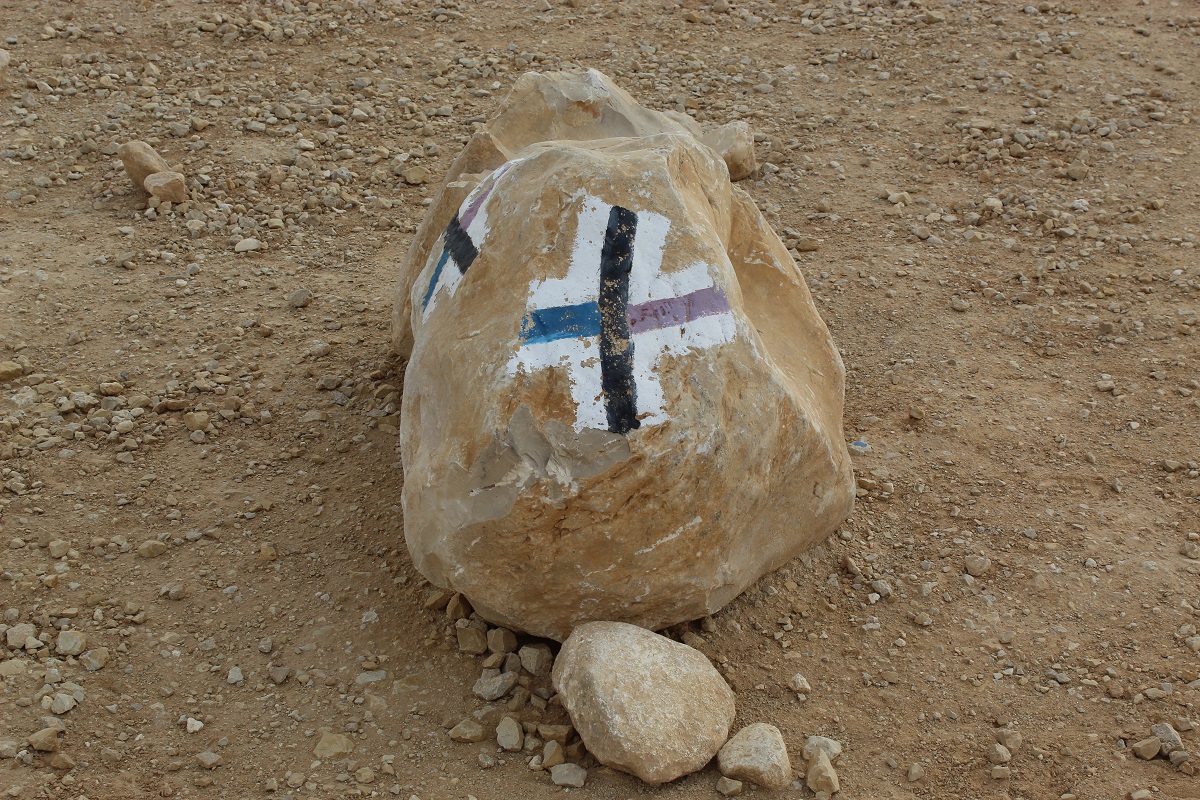
If you arrive by car, you will park right next to it. If you have walked along the cliff, you will come to this stone via the red path coming either straight from Krivine Guesthouse or from the sculpture park.
I have already said that I prefer starting with the black path, but if you are stubborn and ungrateful and you insist on taking the blue path here’s what to look out for:
You come to this barrier (below) and you turn left. You will be walking along an old barbed-wire fence on your right with a less than impressive view of Kibbutz Sde Boker to your left for about 20 minutes.
Beyond this barrier is a patch of desert used for research by the university and entry is strictly forbidden. One of the things that happen in this no-mans land is the vulture feeding station. Dead animals are scraped off the road; the Bedouin will call the Nature Reserve rangers to tell them they have a dead camel or donkey and a truck will duly arrive to hoist it up and bring it to this feeding station. The local vultures recognize the truck and when it hoves into sight you can see half a dozen of them circling above like in the old western movies.
In the picture below you have cage in the foreground [three quarters right, two thirds down]. This is the vulture feeding station and in the background is the village of Midreshet Ben Gurion. The cage is about 300 meters from the camera and this picture is taken from the track you are taking; hence the need for binoculars or a fancy camera.
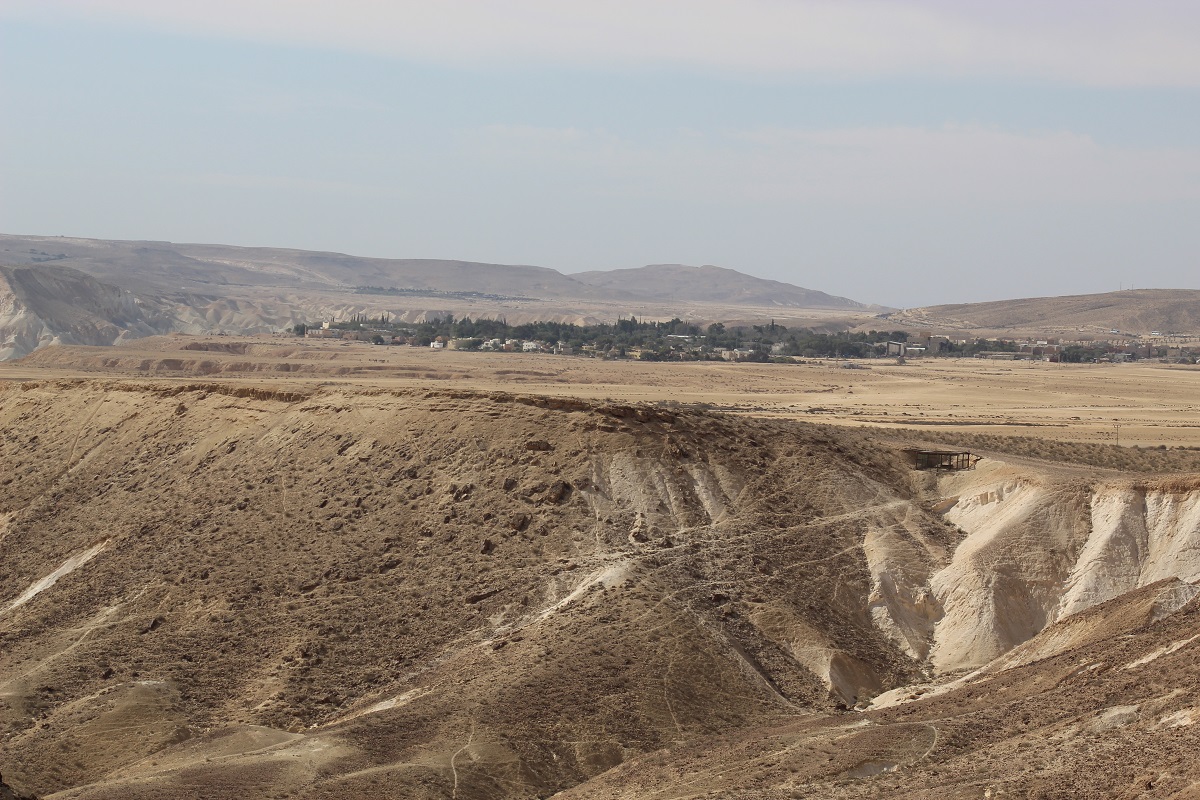
In the next picture, you can see the truck picking up an animal to the left of the feeding station. It was a bit late that day so we missed the vultures arriving. You can generally see the truck from the departing stone or from the top of the Mount Tzaror.
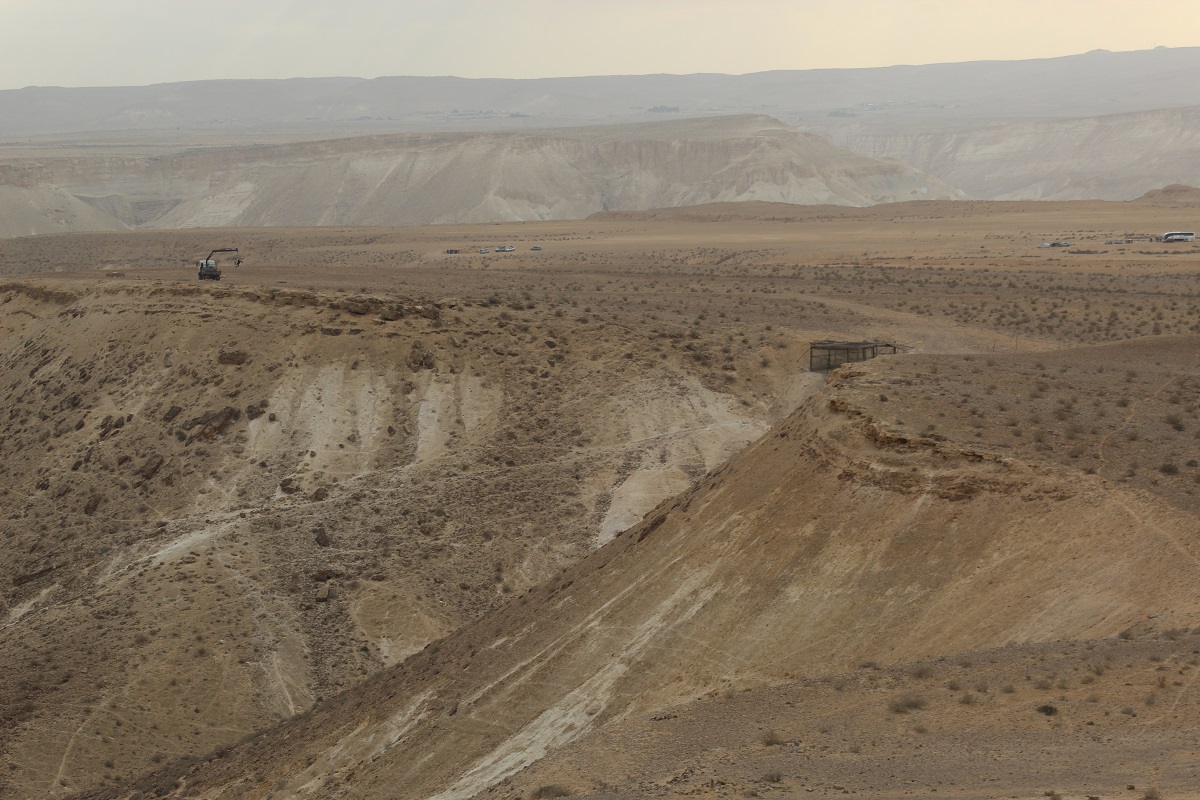
But let’s go back to the departure stone and start the walk from the black path as this is how I prefer to do this hike.
Start walking down a broad dirt road [all vehicles] called Tzir HaNeft (petroleum road). It will take you down with a stunning view over the Tzin Valley, the Akev riverbed and as always, Hod Akev. On a good day, you can see into Jordan.
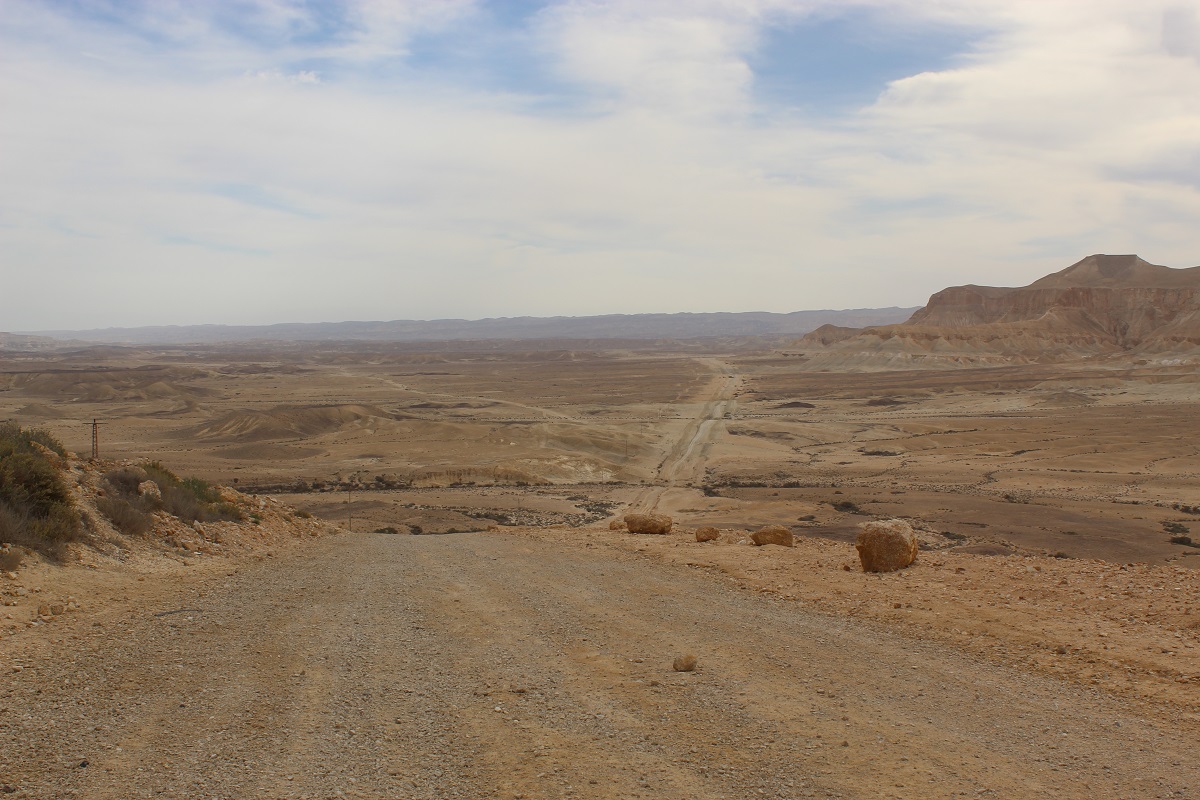
Just before the road bottoms out, you will see on your left hand side a mark indicating the beginning of the blue path.
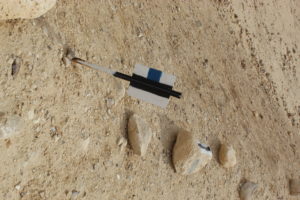
You now enter Nahal Tzaror (river bed), which is immediately visible by an abundant and surprisingly diverse vegetation, as well as varied rock formations. This is about the most beautiful desert landscape I have ever seen, you won’t want to leave it.
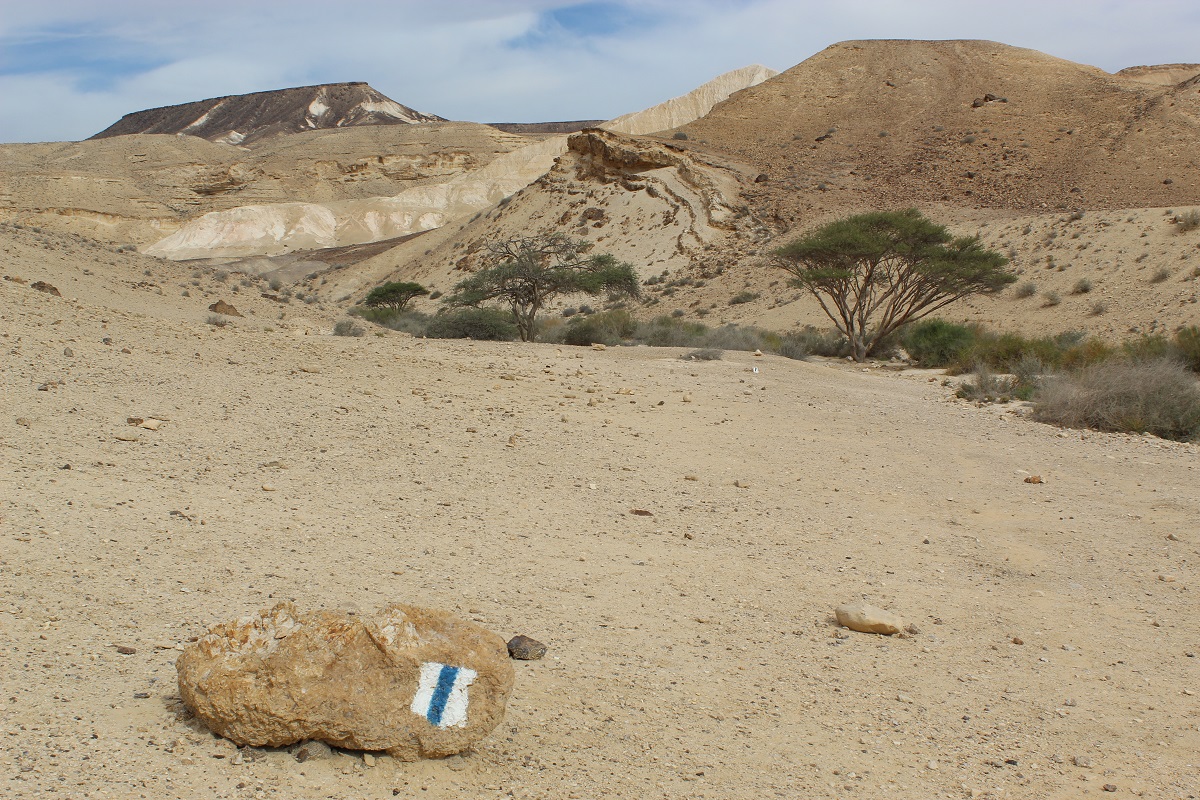
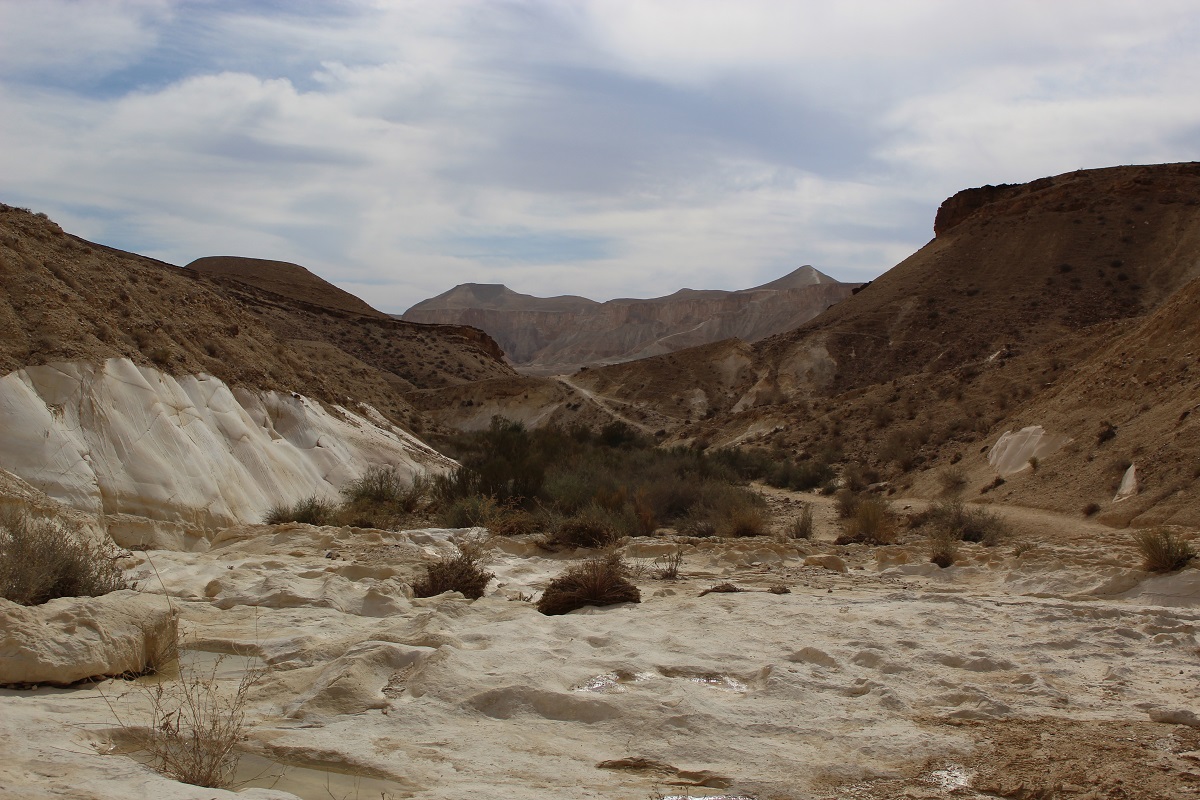
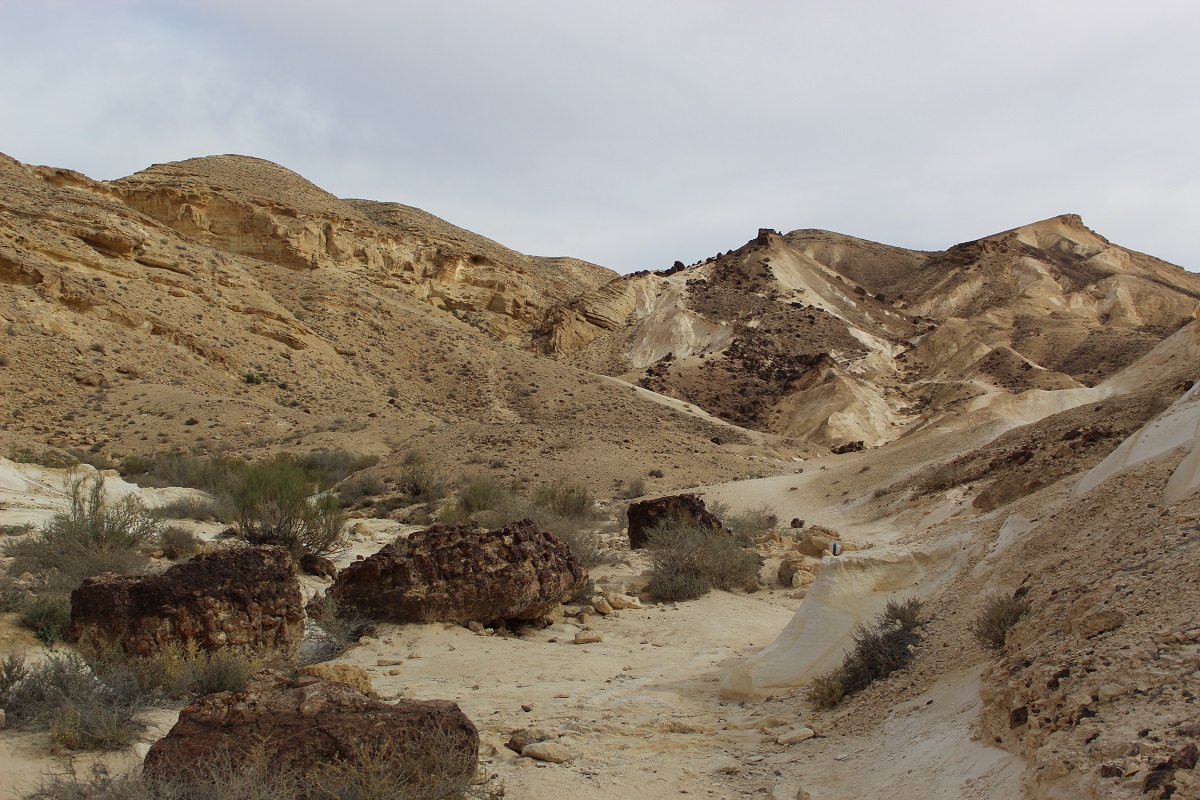
….and after about 20 minutes just when you can’t bear it any longer you will spot a double white strip marking the path to the water hole:
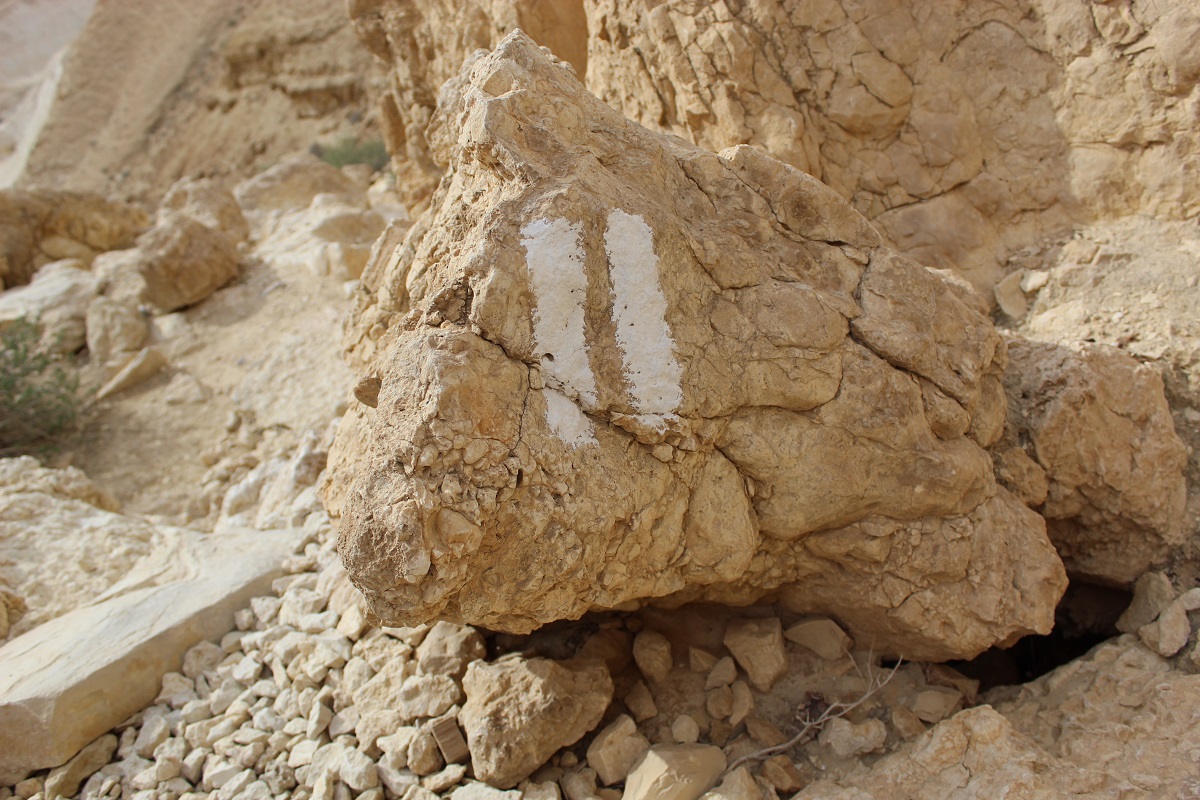
hidden just behing big stones, a few meters from the mark.
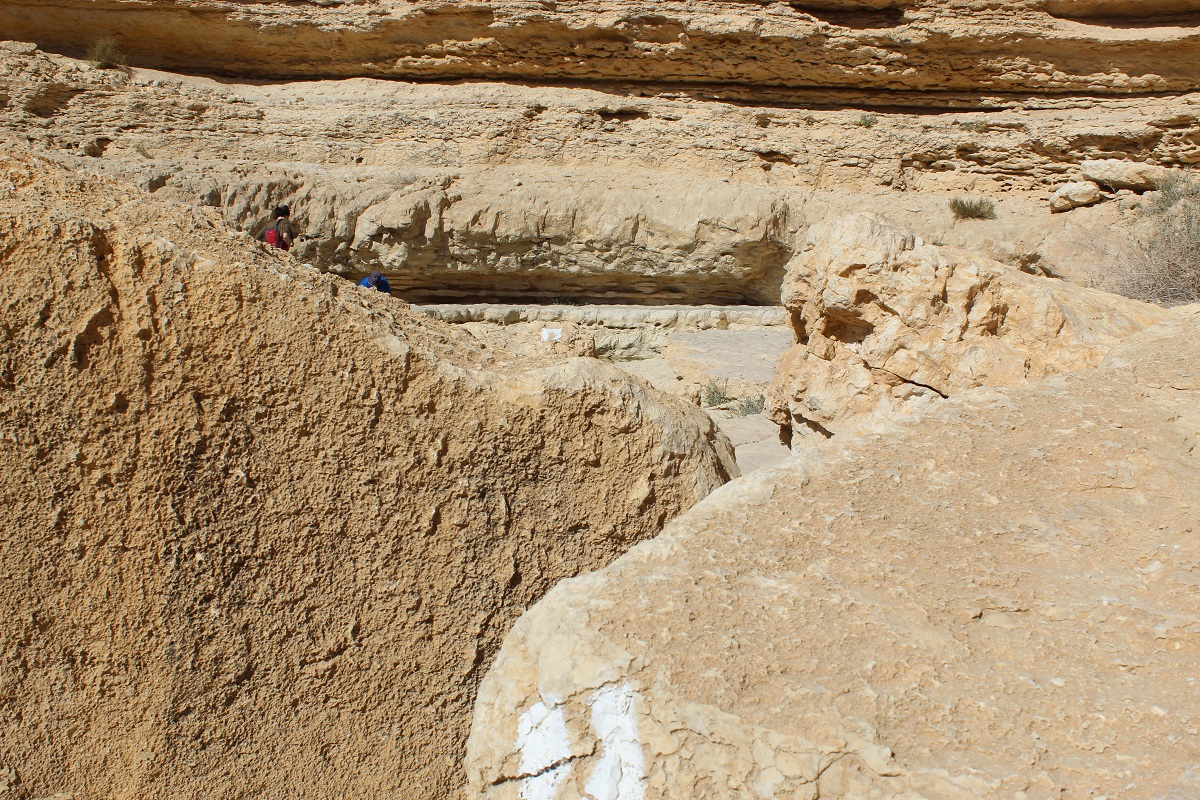
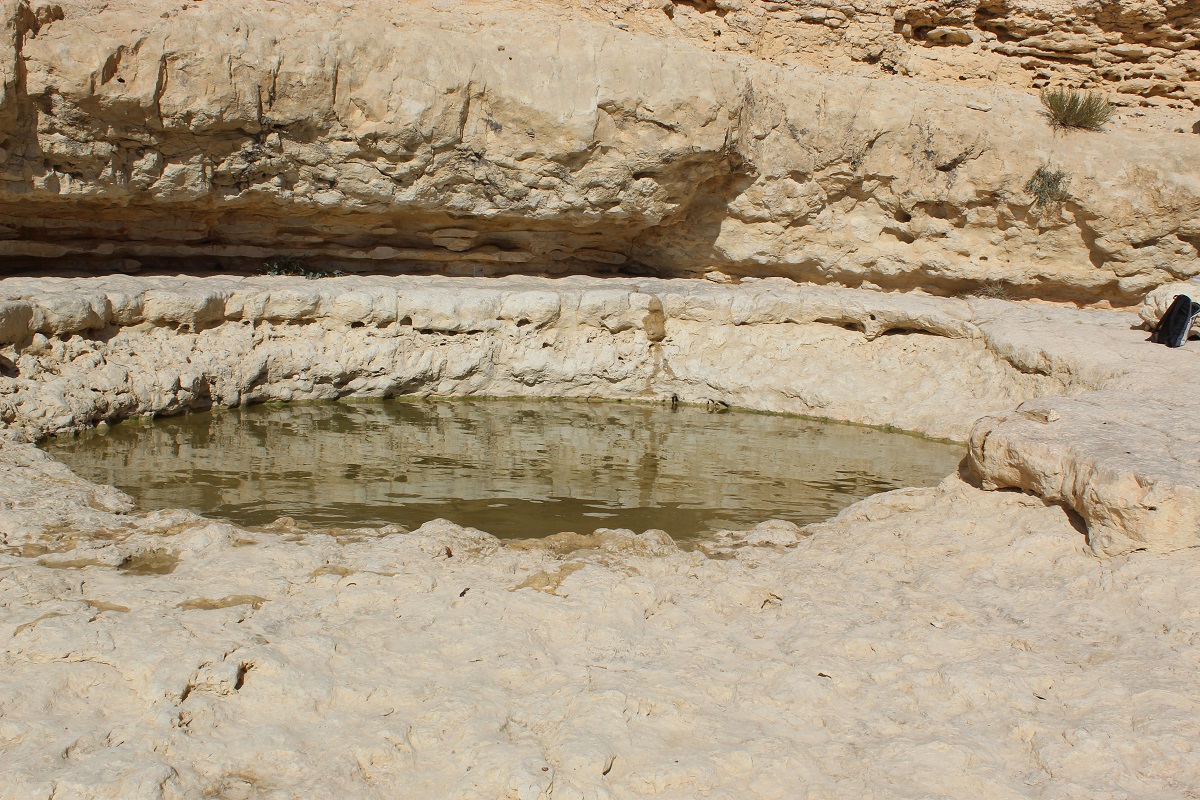
Stay for a while then return to the blue path, and keep going up until you reach the top of Mount Tzaror.
View from the top:
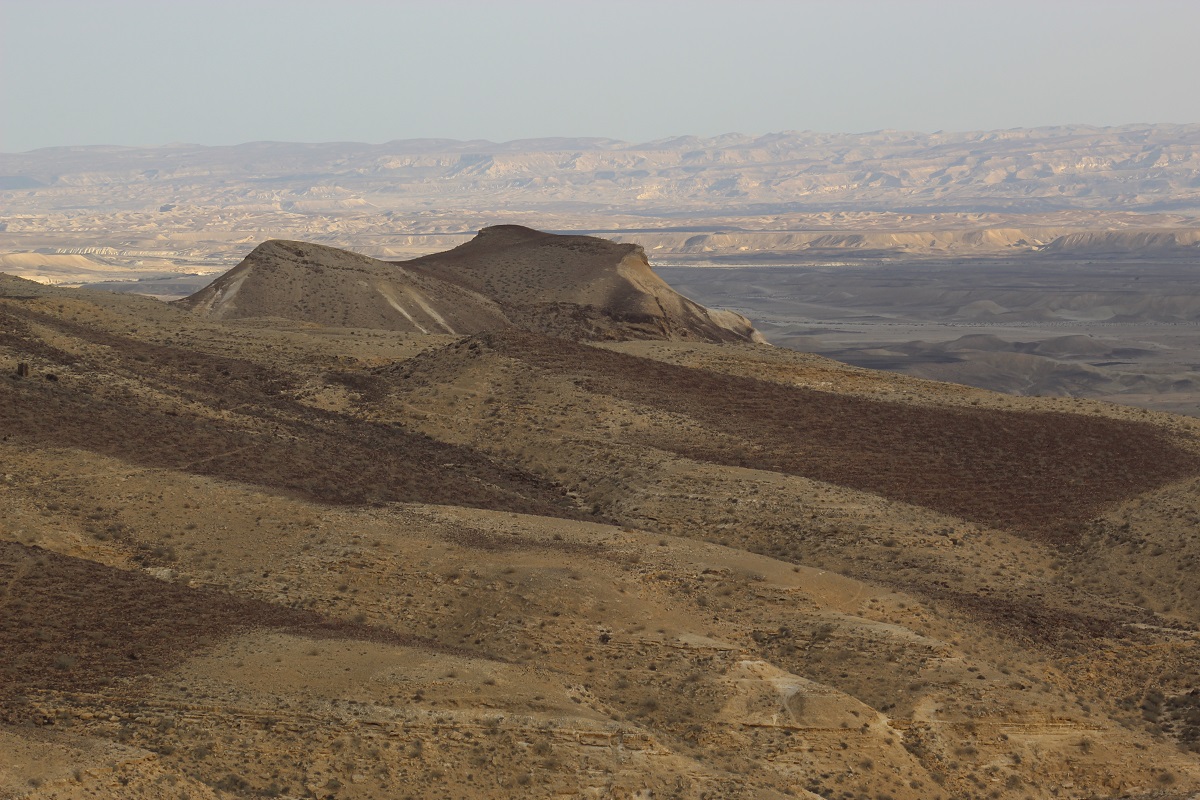
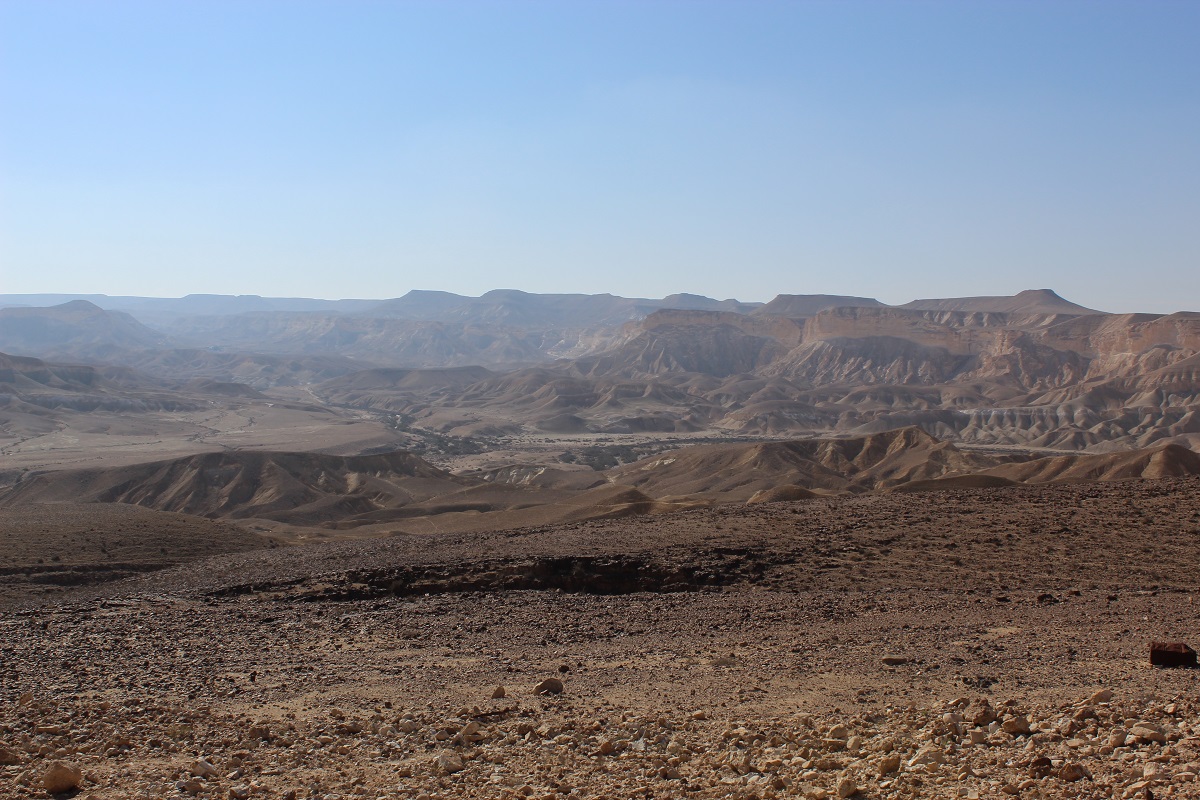
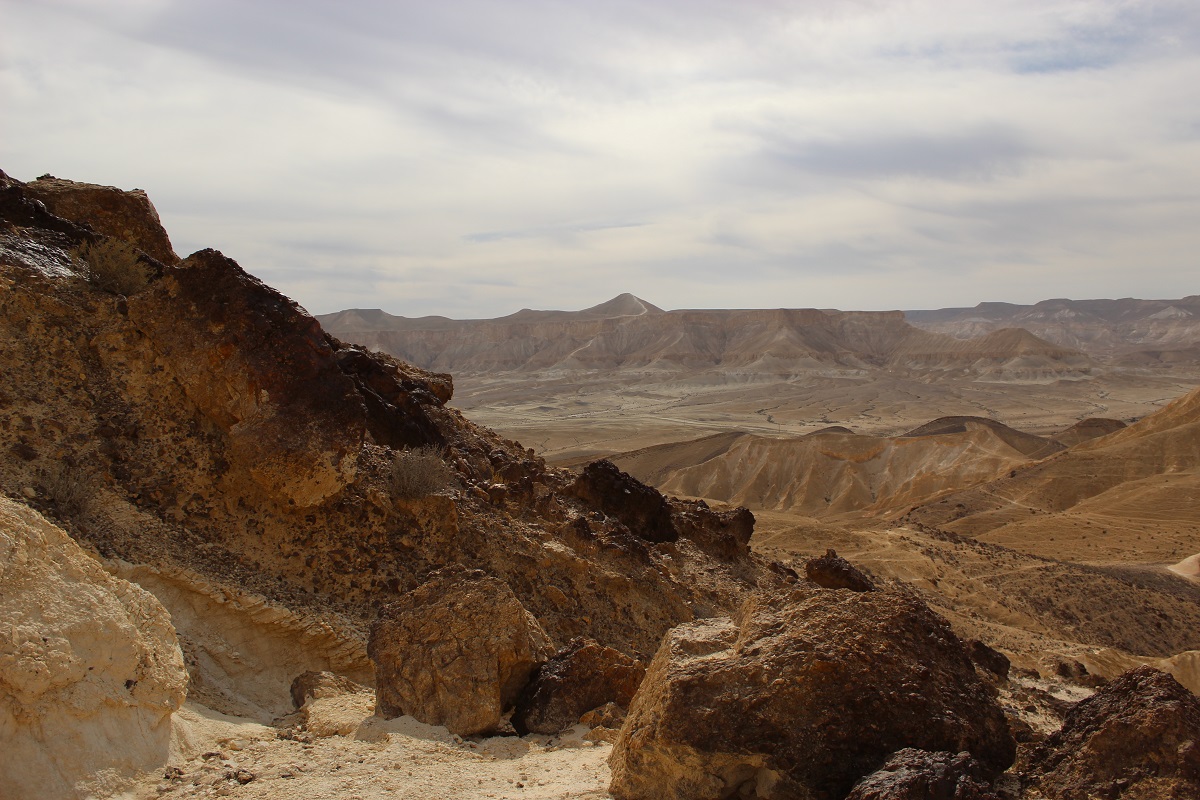
From there, you will start your descent along the far side of the mountain – the leg I have designated ‘pleasant desert-hike’ – until you reach the university fence [now on your left] and in another 20 minutes (the last lap) either you will find your car where you left it or if you came by foot you will return to Krivine Guesthouse along the cliff.
Author: Marion Krivine
French owner of Krivine Guesthouse in Midreshet Ben Gurion, together with my British husband John. A little piece of european greenery in the heart of the Negev Highlands, Israel. I have set out on this journey in order to provide our guests with the most accurate, up-to-date and comprehensive guide of the area. View all posts by Marion Krivine



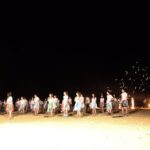
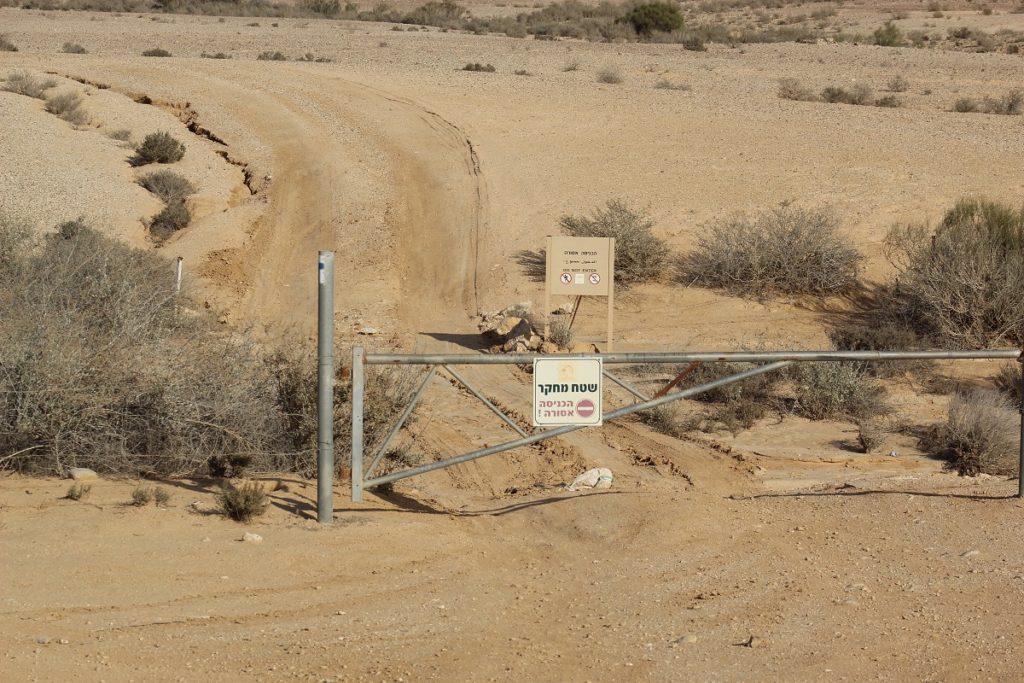
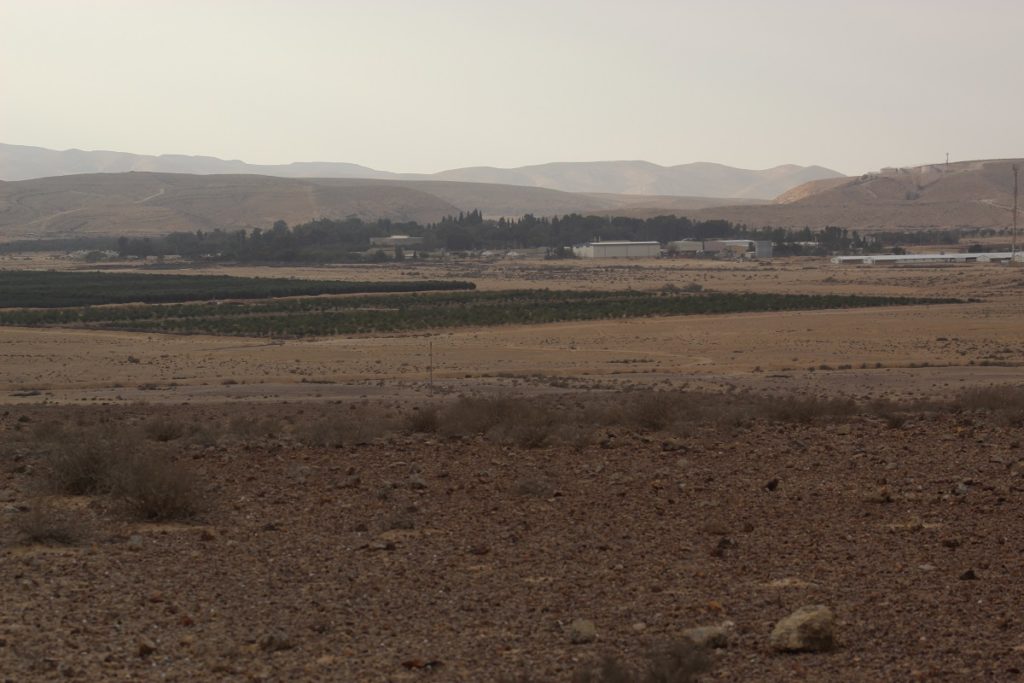

Hello I am interested in coming to stay at your guest House Dorine night with some of my kids. I really want to see the striped hyena. Can you tell me which days fresh meat is put out at the feeding station.
Hi Tracy, we would be glad to have you and your children. From what I know, there is no specific day for bringing carcasses to the feeding station (but I might be wrong), it is more a question of having found some dead animal in the wild and bringing it there. Furthermore, still as far as I know, the feeding station is more meant for vultures (which can be seen during the day) and which will appear even before the truck has finished bringing the food. The feeding station belongs to the university, when you come, we will make enquiries and find out who should be contacted for more information. Furthermore, you can not approach the feeding station, only see it from far away with binoculars. Since hyenas feed at night, the feeding station might not be the best place to see them. An expert on the subject you should contact is Dr Haim Berger (0545343797). He is a zoologist specialized in predators and he organises night safaris (we wrote a post about him). I went several times with him. Once, we had a hyena running next to the jeep for several hundred meters. Not to say that you are sure to witness one going with him, and the chance of seeing one eating is probably close to zero, but it is probably your best shot at seeing a hyena. Unless you walk around the village at night, as lately, a hyena (probably too old to find food in nature) has been spotted on numerous occasions walking around the streets of the village. Which has sparked a heated discussion among the inhabitants, the specialists trying to convince worried people that there is no danger as long as you are alive and you don’t try to get close, since hyenas only feed on dead animals.